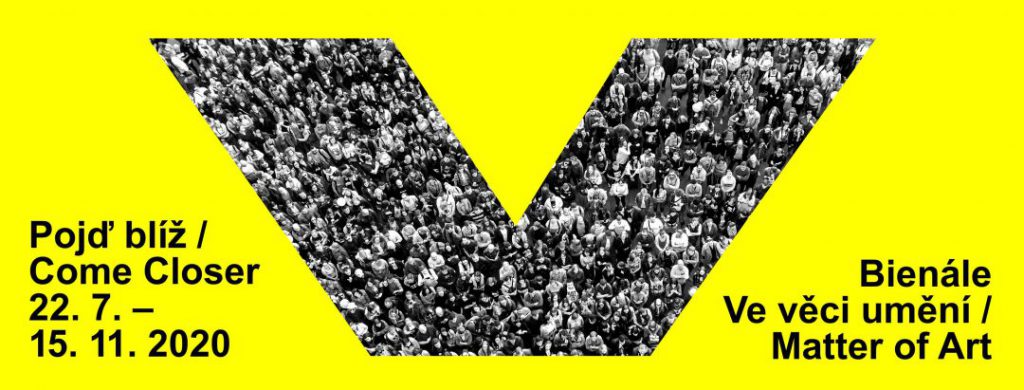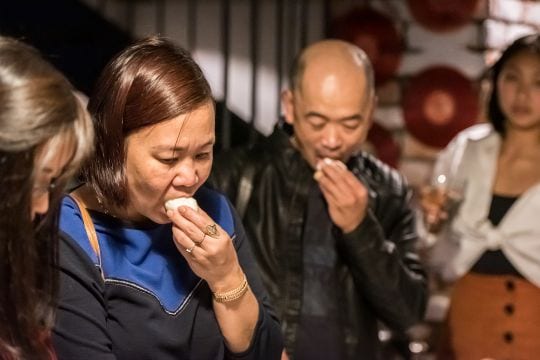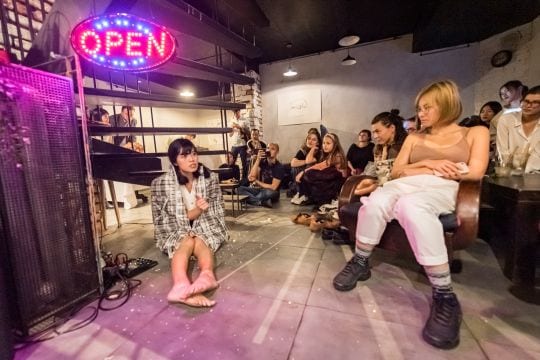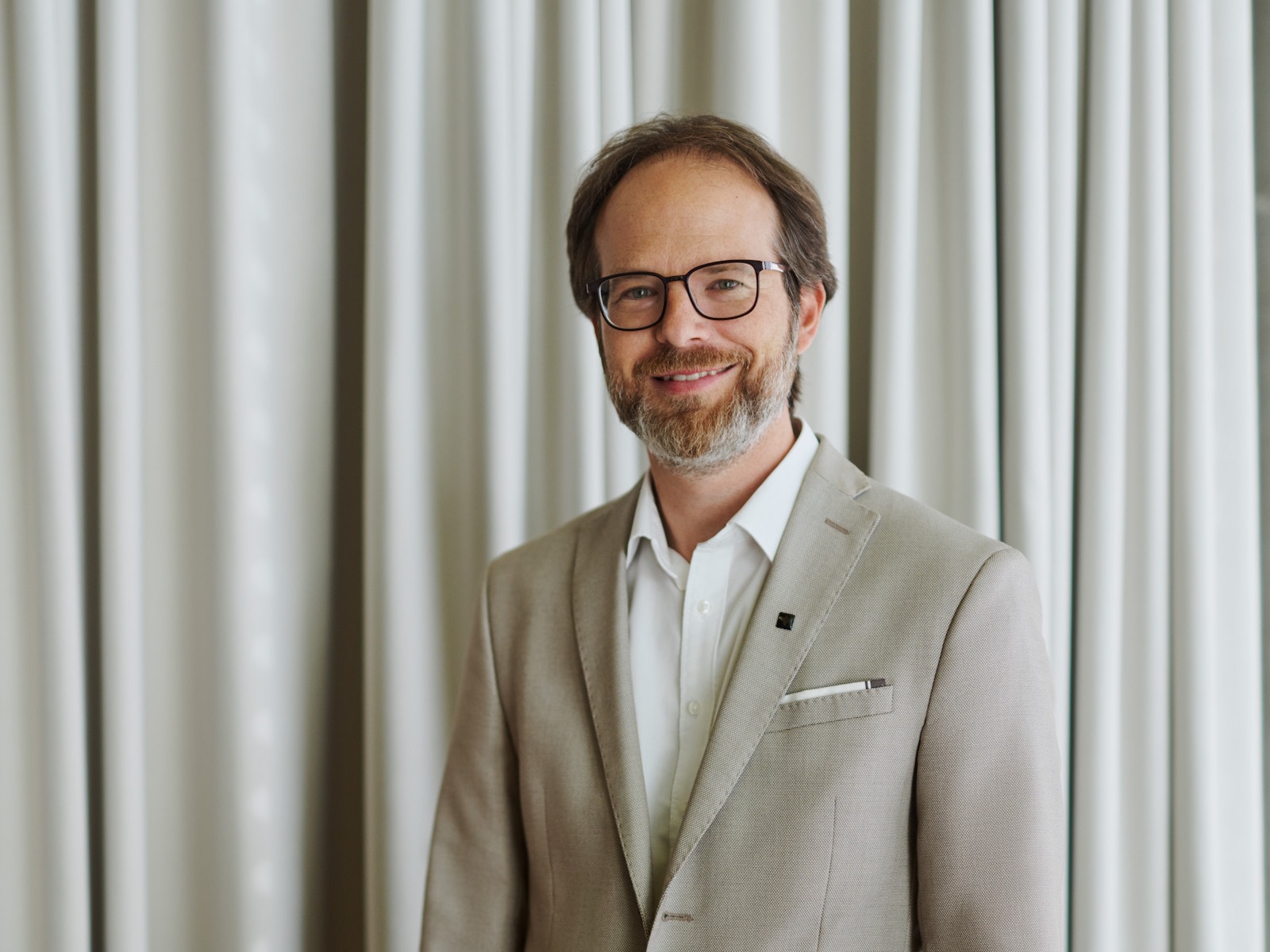The first edition of the Biennale Ve věci umění / Matter of Art 2020 (VVUMOA) will be held in Prague from 22 July to 15 November 2020, and highlights the themes of care, empathy, intimacy in relation to divisions existing across race, culture, class, and gender. The opening will take place on 21 July.
VVUMOA 2020 is curated by the programme director of tranzit.cz Tereza Stejskalová and the curator and art theorist Vít Havránek. The project is developed in cooperation with the GHMP, and its ambition is to become an inclusive space that will allow for gatherings and discussions, attracting visitors from across today’s polarised society.
The project, organised by tranzit.cz in cooperation with the Prague City Gallery, comprises the international exhibition entitled Come Closer, curated by Tereza Stejskalová and Vít Havránek, who are also editors of Come Closer: The Biennale Reader – a book published concurrently with the biennale and distributed internationally by Sternberg Press. This reader will be the latest addition to the prolific publishing output of tranzit.cz, which includes Czech translations of books by Didier Eribon, Carla Lonzi, Chris Kraus, Nicolas Bourriaud, Bruno Latour, Slavoj Žižek and Frantz Fanon.
Featured among the 40 participating artists are Candice Breitz, Karol Radziszewski, Sung Tieu, Róbert Gabriš, Taring Padi, Anna Kravets, Alina Kopytsa, Tuan Mami, Volodymyr Kuznetsov, Eric Baudelaire, Lucy Beech, Alžběta Bačíková, Otty Widasari & Hafiz, Jiří Žák and the Institute of Anxiety. Nearly a dozen of the artists were commissioned to produce new artworks for the biennale.

In order to promote the accessibility of art in general, all venues of the biennale have wheelchair access, and free admission applies to the exhibition as well as to all the events presented as a part of the extended live and community programme.
Venues
Prague City Gallery
Municipal Library, 2nd floor
Mariánské náměstí 98/1
110 00 Prague
The Municipal Library of Prague, situated on Mariánské Square, was built between 1925 and 1928 according to the design of the architect František Roith, a student of the professor of the Vienna Academy and distinguished architect, Otto Wagner. The building was conceived as a cultural institution providing broad possibilities for its use, including exhibitions, lectures and concert halls. The buildingʼs architecture is based upon a rather rationally conceived ground plan and simple arrangement of material. The extensive exhibition spaces on the 2nd floor were acquired by the Prague City Gallery in 1992. They subsequently underwent a thorough reconstruction, and today serve the purpose of housing prestigious Prague exhibitions. The adaptations to the building include a new artistic conception of the main entrance to the Gallery from Valentinská Street, designed by the architect Vlado Milunič in 1996.
The Prague Market
Bubenské nábřeží 306
170 00 Prague
The protected heritage site of the Prague Market, a former meat processing facility, is located in the Holešovice district, with a distinguished industrial history. It was built between 1893–1895 according to the design of the architect Josef Srdínek, as the central slaughterhouse of the royal city of Prague. The design uses elements of Renaissance Revival and Art Nouveau. Since 1983 the area has been used as a marketplace, and today the area is undergoing yet another transformation in order to establish a multi-purpose space comprising shops, galleries, cultural venues, and a food court..
DBK Shopping Center
Budějovická 1667
140 00 Praha
The DBK building was opened to the public in 1981 as ‘Dům bytové kultury’ (House of Interior Design). The eight-storey building was designed by the architect Věra Machoninová and is exceptional not only for its form, but also for the used materials, such as the wind-proof steel Atmofix, aluminium and concrete. Several art installations were also part of the design, such as a round-shaped decoration made out of concrete. The building has undergone several phases of reconstruction and served various purposes – in the early 1990s it served as the first Czechoslovak branch of IKEA, and later it became known as the Prior department store. In 2006 the building underwent a renovation in order to modernize the shopping areas, improve its technical condition and make it accessible and barrier-free. In the same year, the building also returned to its original name of DBK.
Artists
Adriena Šimotová, Alena Kučerová, Alice Nikitinová, Alina Kopytsa, Allan Elgart, Alžběta Bačíková, Anna Kravets, Antanas Sutkus, Atelier of Irreversible Change, Bohumila Doleželová, Candice Breitz, Elisabeth Subrin, Eric Baudelaire, Eva Springerová, Hafiz, Institute of Anxiety, Isabela Grosseová & Jesper Alvaer, Iza Pavlina, Jean-Charles de Quillacq, Jirka Skála, Jiří Žák, Karol Radziszewski, Krešimir Golik , Lucy Beech, Marina Abramović, Naděžda Plíšková, Olga Čechová, Otty Widasari, Pauline Boudry & Renate Lorenz, Ragnar Kjartansson, Raša Todosijević, Renato Guttuso, Róbert Gabriš, Sung Tieu, Taring Padi, Thomas Hirschhorn, Tuan Mami, Věra Merhautová, Viola Ježková, Volodymyr Kuznetsov.
Curators
Tereza Stejskalová (*1981) is a critic and curator. Between 2012-2015 she worked as an art editor of the biweekly cultural magazine A2. She co-founded the online daily news site A2larm. Since 2015 she has been working as a curator at tranzit.cz, and in 2019 she was appointed as its Programme Director. She has contributed numerous texts to books, catalogues, art magazines and web sites. She has presented her curatorial / artistic projects at the National Gallery Prague; Framer Framed, Amsterdam; Kunstraum Kreuzberg/Bethanien, Berlin; Warszawa Biennale and Gwangju Biennale. Together with Barbora Kleinhamplová she published a book of interviews entitled Who is an Artist? (2015). In 2014 she received the Věra Jirousová Award for established art critics. She is a lecturer on contemporary art at FAMU in Prague.
Vít Havránek (*1971) is a writer and curator currently employed as Vice Dean of Academy of Fine Arts in Prague. From 2002 to 2018 he worked as director of the contemporary art initiative tranzit.cz, having previously served as curator at the Prague City Gallery and National Gallery in Prague. He has curated and co-curated exhibitions at various institutions, most recently Dead and Alive – 9th Triennial of Contemporary Art U3, MG+MSUM, Ljubljana, Jakarta Biennale 2017, Muzeum Sztuki, Lodz; VOX, Montréal; New Museum HUB, New York; Steirischer Herbst, Graz, Manifesta 8, Centro Cultural de Montehermoso, Murcia; Espace Electra Paris, pas Prague and others. Together with artists, co-editors and JRP Ringier Havránek has edited and co-edited books and catalogues including Pictorial Atlas of a Girl Who Cut a Library into Pieces (with Eva Koťátková, 2016); The Czech Files (with H.U. Obrist, 2014); Atlas of Transformation (2010); Autobiographies (2006); The Need to Document (2005); Lanterna Magika (2002); and action, word, movement, space (1999). His texts have appeared in the books Art and Theory of Post-1989 Central and Eastern Europe: A Critical Anthology, Invisible Adversaries, Green Room, Promesses du passé, Voids: A Retrospective, and art magazines.
The Biennale Ve věci umění / Matter of Art (VVUMOA) is organized by tranzit.cz in cooperation with Galerie hlavního města Prahy / Prague City Gallery. ERSTE Foundation is main partner of tranzit.
The project builds upon the activities of the tranzit.cz initiative, which has had a significant influence on the Czech art scene as a part of the tranzit.org network, founded in 2002 and working independently in Austria, the Czech Republic, Hungary, the Slovak Republic and Romania. During the course of its existence, tranzit.cz has been engaged in numerous international projects and exhibitions within the framework of tranzit.org, such as Monument to Transformation 1989 – 2009; Manifesta 8; Report on the Construction of a Spaceship Module and others. Furthermore, VVUMOA is a founding member of the East European Biennale Alliance, together with OFF-Biennale in Budapest, the Visual Culture Research Center / Kyiv Biennial in Kiev and Biennale Warszawa.




